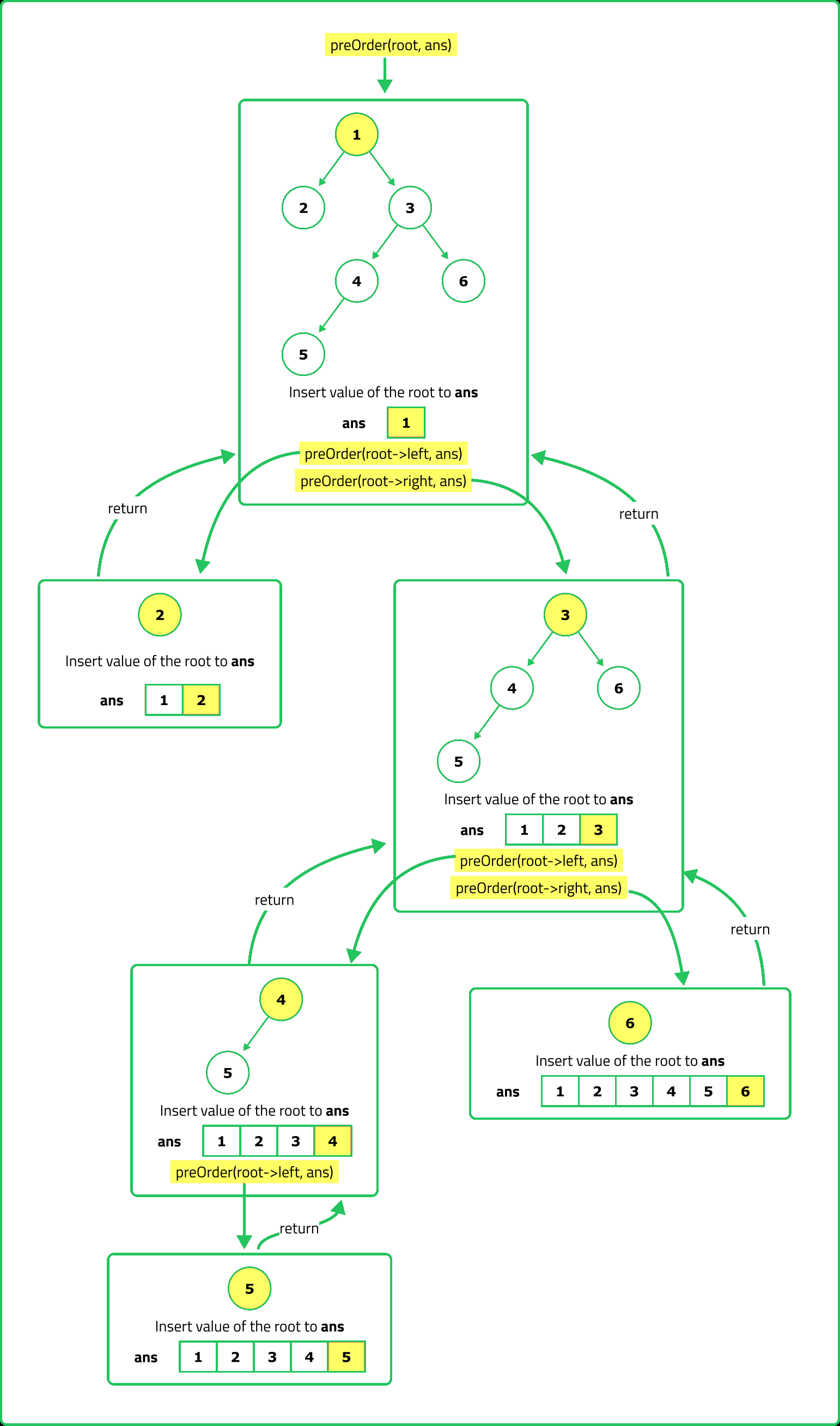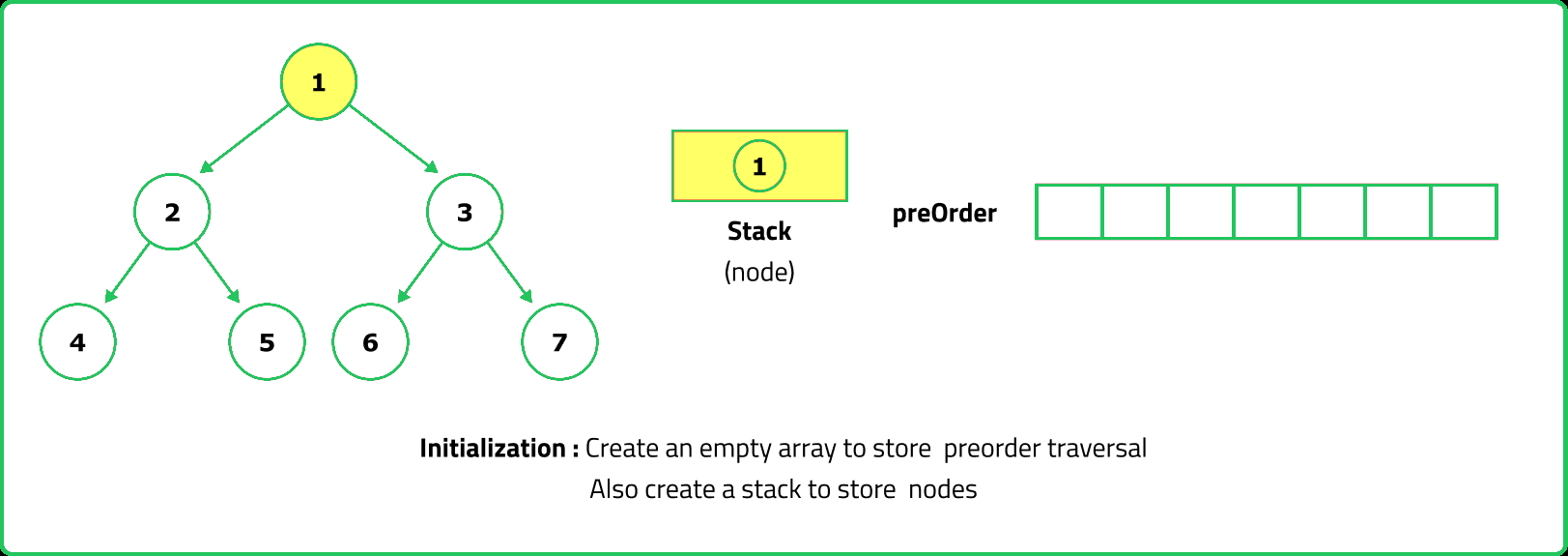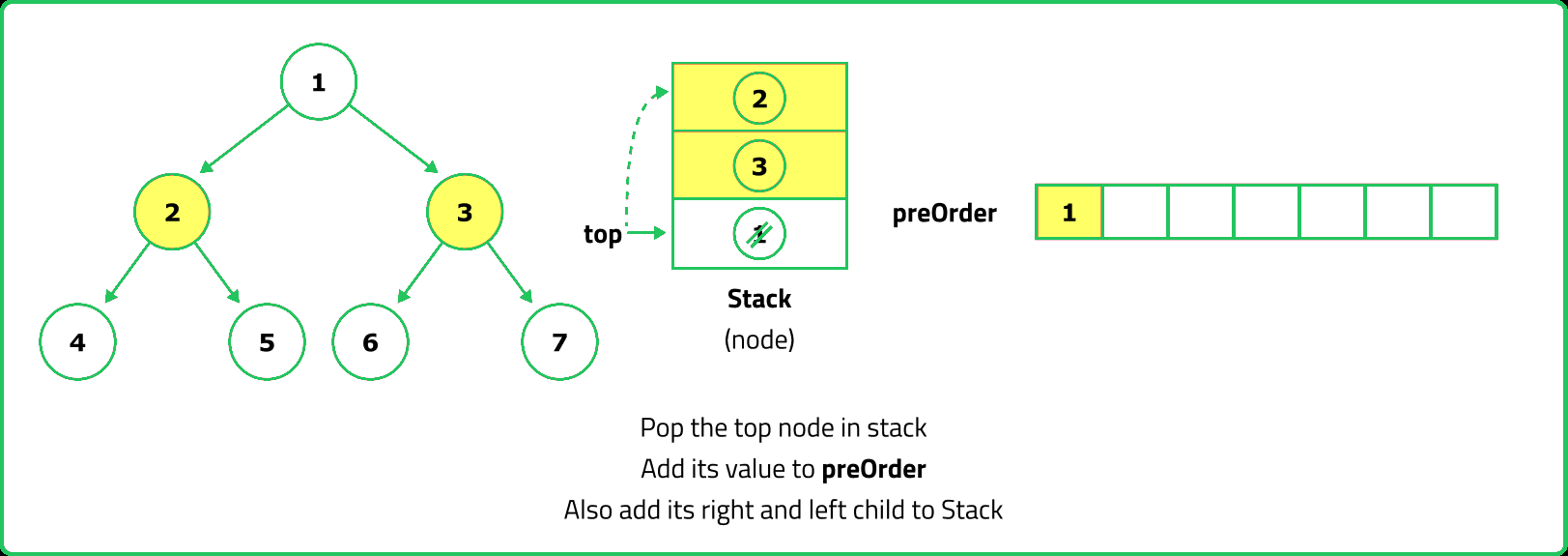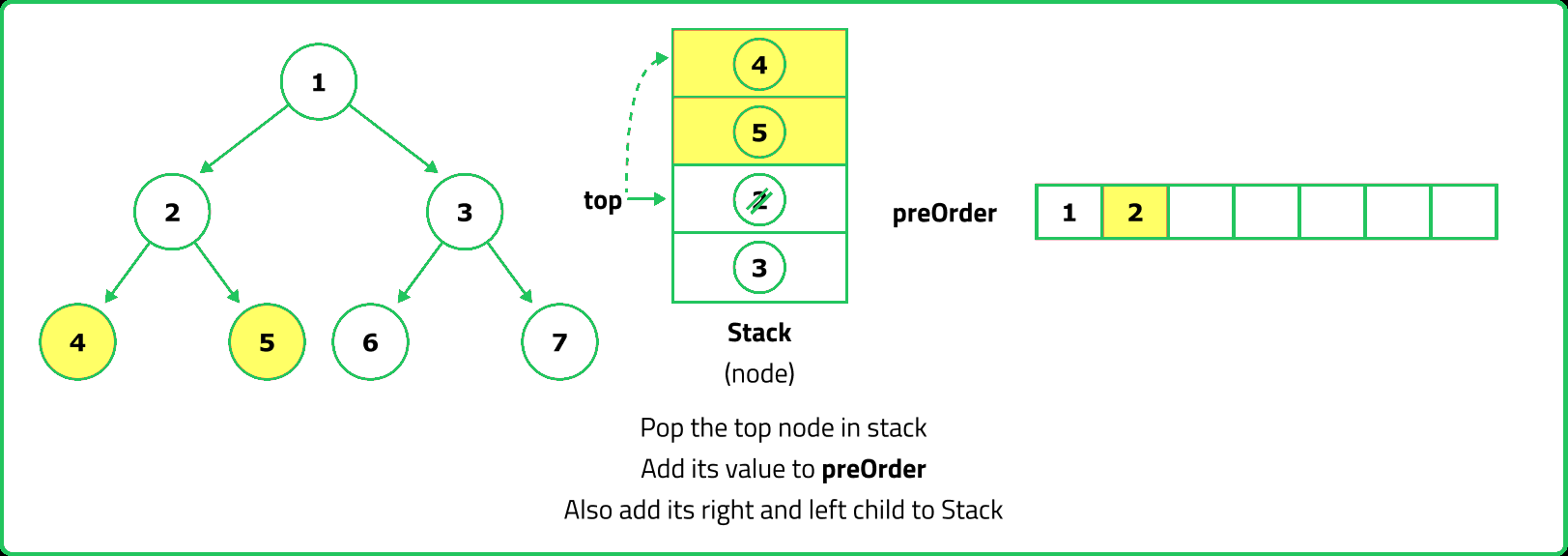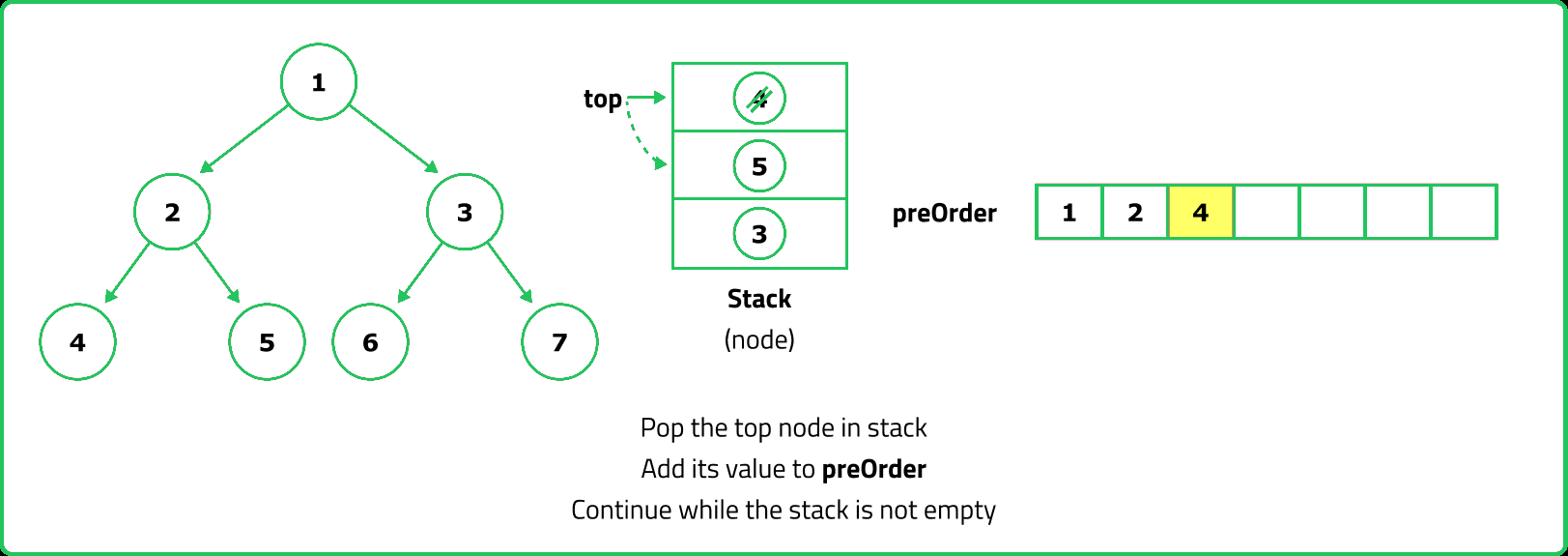Preorder Traversal
Binary Trees
Theory/Traversals
Easy
- Fun Fact: Preorder traversal of a binary tree is a classic algorithm often used in practical software development
- For instance, in areas involving hierarchical datasets, such as the DOM (Document Object Model) in web development
- In this context, each HTML/XML tag can be seen as a node in a tree with a hierarchical structure
- Preorder traversal is then used to traverse the entire DOM in an orderly manner, allowing developers to effectively manipulate, add, or remove elements
Given root of binary tree, return the preorder traversal of the binary tree.
Examples:
Input : root = [1, 4, null, 4 2]
Output : [1, 4, 4, 2]
Explanation :
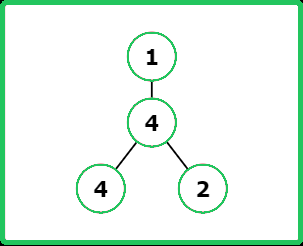
Input : root = [1]
Output : [1]
Explanation : Only root node is present.
Input : root = [5, 1, 2, 8, null, 4, 5, null, 6]
Constraints
- 1 <= Number of Nodes <= 100
- -100 <= Node.val <= 100
Hints
- A stack can be used to simulate recursion by manually maintaining the order of traversal. Since the traversal visits the root first, push the root onto the stack, process it, then push its right child before left (so the left is processed first).
- If the tree is empty (root is None), return an empty list. If the tree is unbalanced, the traversal should still correctly process all nodes.
Company Tags
Deloitte
Ernst & Young
Micron Technology
JPMorgan Chase
Bloomberg
Western Digital
Ubisoft
Roblox
HCL Technologies
Square
ARM
Medtronic
Uber
Target
Boston Consulting Group
Swiggy
Shopify
Chewy
Wayfair
Broadcom
Mastercard
Nutanix
Rockstar Games
Salesforce
Epic Systems
Google
Microsoft
Amazon
Meta
Apple
Netflix
Adobe
